“Excellence is to do a common thing in an uncommon way.”
― Booker T. Washington
National research shows 29% of employees are engaged in excellence. They’re eager, willing, and personally responsible. The remaining 71% are mediocre or actively disengaged…
Ghandi, Helen Keller, DaVinci, or simply a neighbor, friend or relative with qualities you admire and appreciate? For me, persons of excellence live intentionally with a strong commitment to their purpose, whether it’s inventing, holding political office, running a school or raising a child.
Our Current Dilemma
National research from the Gallup Organization on over 700,000 American workers indicates only 29% of employees display a high level of committed passion on the job. They are called Fully Engaged and are described as eager and willing, personally responsible for their work, their relationships, and have strong self and social interest. I’m sure you can think of adults who are like this, they are your go-to people, the ones you can count on in a bind. They give their 100%. They are the 20% in the 20/80 rule. On average, they generate $32,000 additional revenue per year for their employees. They are happy, healthy, take reasonable risks, are creative, innovative and great team players. They get along with others and are a delight to be around. And… they won’t stay in an environment in which they are not inspired or supported adequately.
Hopefully you know children in this category too because these same statistics begin in childhood. Fully Engaged children are the ones who are prepared when they go to school or to a job, and they’re responsible, thoughtful, get along with others, including adults and children, and like to help out. They love to learn and they are cooperative and helpful in their families, classrooms and neighborhoods.
Out of the 71% remaining, 55% resentfully do only what’s absolutely required and nothing more. 55% of the population is a disturbing amount of people. This group of people are described as Disengaged. Their behavior is characterized by mediocrity. In the adult workforce, they are often referred to as nine-to-fivers because they show up to deliver the bare minimum in quality and commitment, in order to collect a paycheck and little more.
They refuse to do things outside of their explicit job description, are often apathetic, bored and uninterested in being helpful beyond the bare minimum. Their communication skills and teamwork are marginal. A disengaged employee wastes a lot of time texting, surfing the internet, talking on the phone, takes too many breaks and in many other ways puts in time without full effort and a sense of resentful compliance. They often look and feel like a victim. Gallup assessed that disengaged employees are a wash financially, not creating new revenues for their companies, but not incurring undue damages either. I disagree they provide a break-even to their employers because there is an opportunity cost of untold dollars when mediocrity is the norm.
In children, disengaged kids are not great communicators. They often divert and distract productive action wherever they gather. They are not necessarily high profile trouble makers, but rather class clowns, kids who get Cs when they are capable of As and Bs, and resist being helpful, organized, conscientious or positive. You likely have some adults and children who are coming to mind about now.
The last and most discouraged group comprise 16% of the population and they are actively disengaged, working against others. Sadly, schools and homes scored similar results.
What’s Going On?
At client sites, I ask, “What do you most want long-term for the people you lead, parent or manage?” The answers are all, in one form or another, “I want them to be people of excellence.” They say, “I want them to be caring, contributing members; I want them to get along with others, be happy, healthy; responsible.” They don’t say, “I want them to be rich, famous or smart.” I ask them: “Are the practices you engage in consistently focused on accomplishing these goals?”
What Leads a Person to Excellence?
Excellence isn’t tied to advantages or a smooth path. If so, how would we explain that Abe Lincoln came from poverty with only one year of schooling, or that cyclist Lance Armstrong continues to inspire us, despite cancer? How do we explain those who enjoy health, wealth or education who don’t always choose excellence? Most importantly, what does lead a person to excellence?
The Four Core Needs
At the heart of the matter, all people have 4 core needs that must be provided for and nurtured if businesses, homes and schools are to be filled with caring, contributing members. The 4 core needs that internally drive all human behavior are: to feel powerful, lovable, connected, and contributing. Most leaders don’t proactively support these needs and in fact, often inadvertently adopt practices that block them (ie: punishment, reward, competition, negativity and neglect of talent).
Mission Critical
When people are frustrated in meeting their 4 core needs in positive ways, they are driven to satisfy them any way they can. These behaviors often seem to confirm wide-spread, faulty and pessimistic biases about human nature (i.e., people are evil, lazy, and selfish). Add to that outdated parenting and school practices, religious messages, and penal codes, and people learn at an early age to avoid self-examination and scrutiny from others. Like a starving man sneaking in to steal bread, discouraged people play out core need hunger in overt or subtle ways that are often socially unacceptable.
Misbehavior: A Detour from Excellence
In our work, we teach ‘a misbehaving person is a discouraged person’ doing his best to move towards wholeness despite his negative behavior. Deficiency in the 4 core needs helps to explain why anti-drug and alcohol abuse campaigns focused on harmful effects or crime reduction with an emphasis on punishment show minimal results. The reason: the Internal drive to meet our core needs is so great it overrides threats of danger or reprisal. In fact, criminal activities of all types (ie: gangs and drug dealing) can and do meet a person’s needs to feel powerful, loveable, connected and contributing. Translation: it’s worth the risk. Realizing “a misbehaving person is a discouraged person doing their best to meet their core needs” paves the way to new paradigms in which social interest, creativity and commitment are intentionally supported.
Cultural Transformation
Results in our client sites and others confirm that positive results occur when companies, schools and homes are intentionally designed to meet the 4 core needs systematically and constructively. In 1984, I attended parent training based on the psychology of Alfred Adler and began to set up new systems in my home towards this end.
I also learned how to redirect, an alternative to punishment and reward. With my overall goal to transfer responsibility to the entire family, it was a pivotal moment when my kids, ages 11, 9, 7 and 5, demonstrated a family meeting in an auditorium. They were confident, comfortable sharing their ideas and mistakes, and described issues they’d confronted and solved. Our 5-year-old daughter ran the meeting to show how capable kids are, and how we underestimate their contributions. I realized the extent to which we all can influence excellence. I came to know: people are and want to be excellent! You want to be excellent! Our cultural systems are usually not focused for excellence –but they’re easy to change.
As published nationally in the column Emotional Intelligence in the Women’s Journal, April/May 2006




